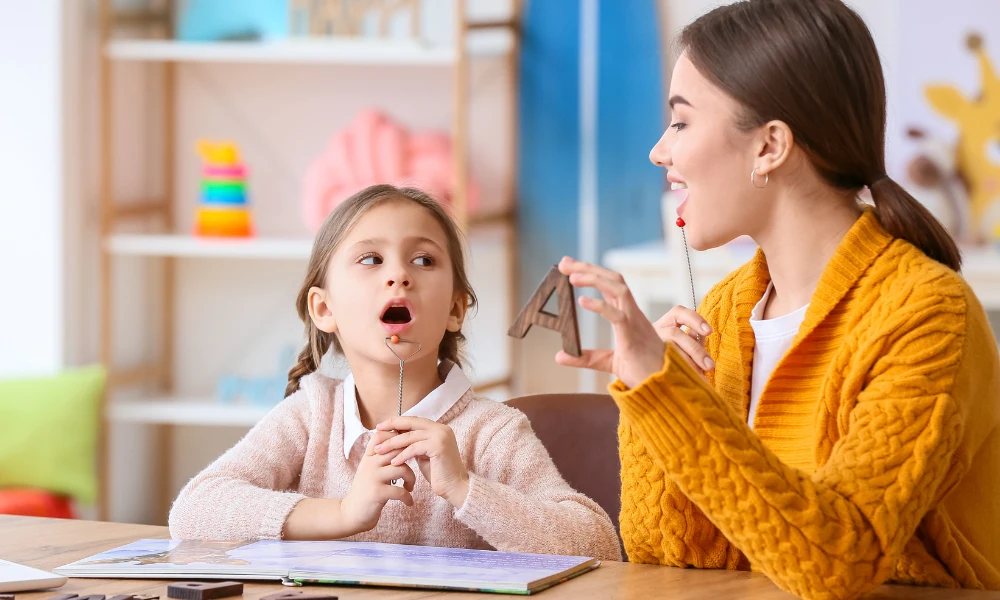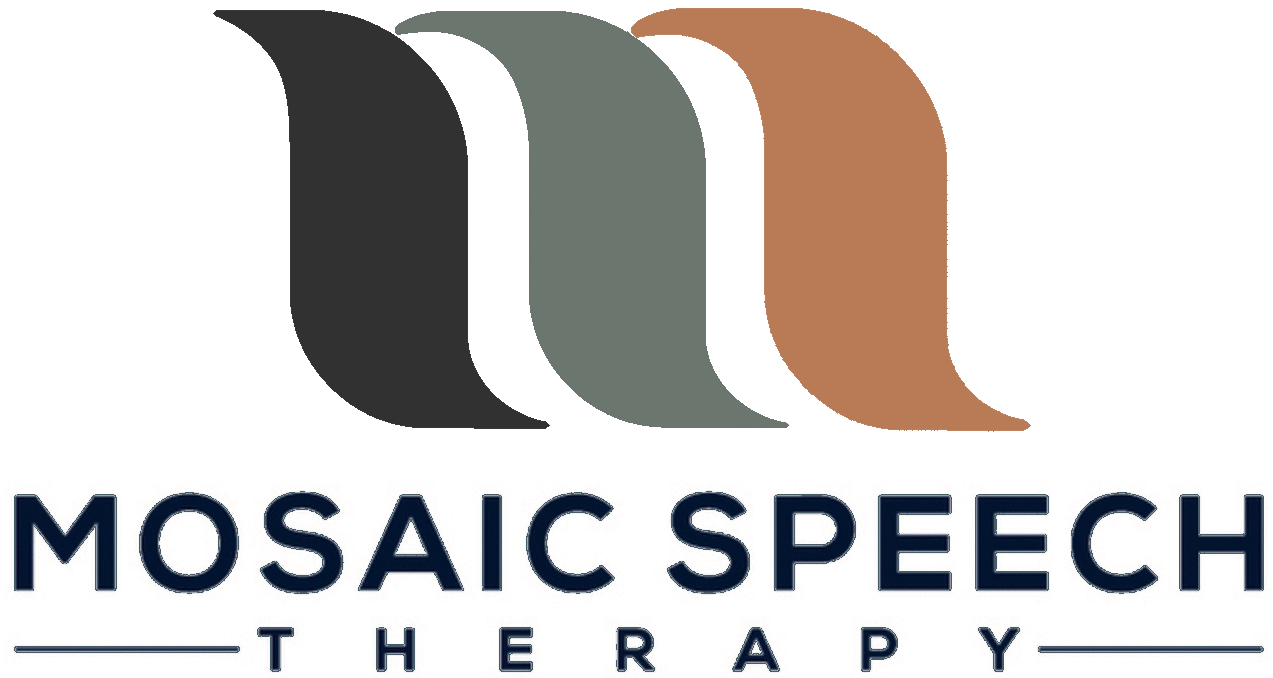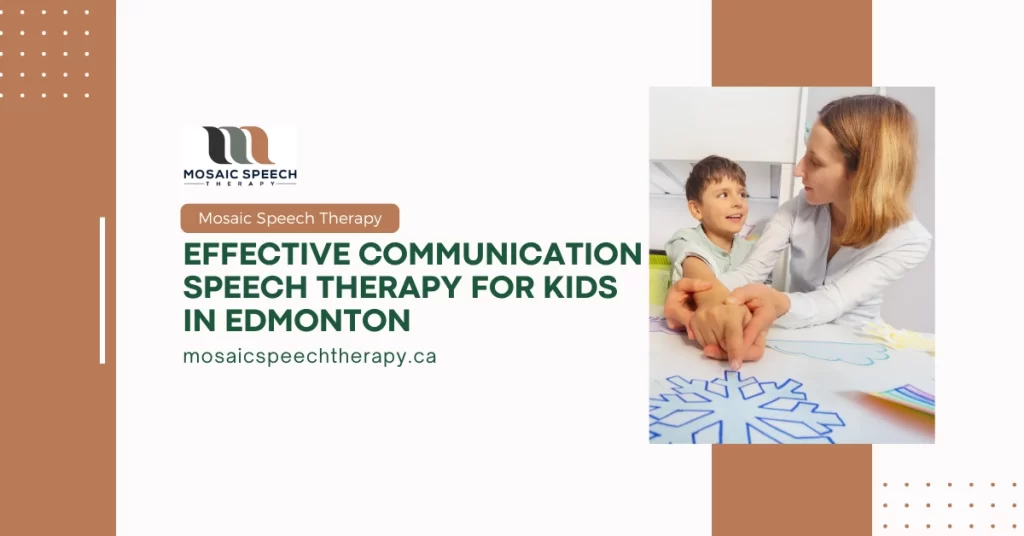When it comes to helping kids’ who struggle with communicating, speech therapy is essential. Kids’ speech problems have drawn a lot of attention since they affect their overall development.
To ensure that children are raised with excellent communication skills from an early age, early intervention is essential.
Identifying Speech Issues in Kids

- Delayed Speech Development: Watch for delays in your child’s ability to speak or communicate compared to peers of a similar age.
- Articulation Problems: Notice consistent difficulty with pronouncing certain sounds or words, which could indicate articulation issues like lisping or trouble with specific sounds.
- Stuttering or Fluency Concerns: Look for repetitions, prolongations, or blocks in speech, especially between ages 2 to 5, indicating potential fluency challenges.
- Language Difficulties: Recognize struggles in understanding instructions, following conversations, or expressing thoughts coherently, signifying language issues. Difficulties with vocabulary, grammar, sentence structure, and sentence length.
- Avoidance of Communication: Some kids may withdraw from communication situations, avoid speaking, or show frustration while trying to communicate.
- Social Communication: Not interacting with others, avoiding eye contact, difficulty with topic maintenance.
Types of Speech Therapy Techniques

Articulation Therapy: Articulation therapy helps children learn how to put their lips, tongue, and teeth in the right place to make sounds for clear speech.
In this therapy, a speech therapist teaches fun exercises and games to make mouth muscles more coordinated and train them to move just right.
For example, if saying “rabbit” sounds like “wabbit,” articulation therapy helps us learn how to say it clearly, making the “r” sound just right.
It’s like practicing until we get really good at saying all our sounds perfectly!
Articulation therapy isn’t hard or scary—it’s like playing games that helps to talk better. With practice and patience, it helps to speak more clearly and confidently!
Language Intervention: Language intervention is like a fun class that helps the client to understand and use words better.
For words, phrases, and interaction with others, a speech therapist is needed. To make learning words fun, they offer games, stories, and activities.
Kids may learn new words, how to put them in sentences, and how to express their thoughts and feelings better.
For example, if saying “big” instead of “huge” or finding it hard to tell a story, language intervention teaches different ways to express themselves, making it simpler to share their ideas and feelings with others.
Language intervention is about learning in a friendly, supportive way. It improves their ability to communicate, understand, and have fun in conversations!
Fluency Shaping Techniques: Fluency Shaping techniques help learning different ways to control breathing, slow down speech, and gently move from one sound to another.
These methods help to make speech clearer and more relaxed, making it easier to communicate with others.
Alternative Communication Methods: Interactive Games: Speech therapists use fun games and activities to help kids learn to communicate better.
- Toys and Props: Using toys, pictures, and props helps to make learning enjoyable and understandable for children.
- Engaging Activities: Through various engaging activities, kids learn to express themselves using words and sentences.
- Encouraging Expression: Therapists create a comfortable environment where kids feel encouraged to talk and express themselves.
Individualized Speech Therapy Plans

Tailoring Therapy to Child’s Needs: Each child’s speech therapy sessions are customized for them. Therapists at mosaic speech assess the individual needs of every kid and create exercises and activities accordingly.
Finding the most effective methods to improve a child’s speech and communication skills is the main goal.
Every kid receives successful and entertaining speech therapy instruction thanks to this tailored method.
Importance of Family Involvement: When families join in speech therapy for their children, it makes a huge difference!
Families learn how to practice speech exercises with their kids at home, which boosts progress.
It’s like having a mini therapy session every day. This extra practice helps kids get better at talking faster.
It also creates a strong bond between the family and the child, making the learning journey more effective and enjoyable.
Conclusion
Speech therapy is essential for kids who have trouble communicating. Children can talk more confidently and clearly with the use of several strategies such as fluency shaping, language intervention, and articulation therapy.
Plans made specifically for each child meet their needs, and family participation speeds up learning.
Finally, by working together, parents may improve their children’s communication skills, confidence, and quality of life.

